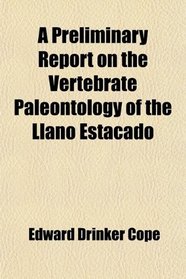Search -
A Preliminary Report on the Vertebrate Paleontology of the Llano Estacado
A Preliminary Report on the Vertebrate Paleontology of the Llano Estacado
Author:
Purchase of this book includes free trial access to www.million-books.com where you can read more than a million books for free. Excerpt from book: Section 3CHAPTER II. THE VERTEBRATE FAUNA OF THE LOUP FORK BEDS. Abundant remains of Vertebrata were found in the Loup Fork beds north of the South Fork of Red River, east of the eastern esca... more »
Author:
Purchase of this book includes free trial access to www.million-books.com where you can read more than a million books for free. Excerpt from book: Section 3CHAPTER II. THE VERTEBRATE FAUNA OF THE LOUP FORK BEDS. Abundant remains of Vertebrata were found in the Loup Fork beds north of the South Fork of Red River, east of the eastern esca... more »
ISBN-13: 9781443293273
ISBN-10: 144329327X
Publication Date: 7/7/2009
Pages: 90
Rating: ?
ISBN-10: 144329327X
Publication Date: 7/7/2009
Pages: 90
Rating: ?
0 stars, based on 0 rating




